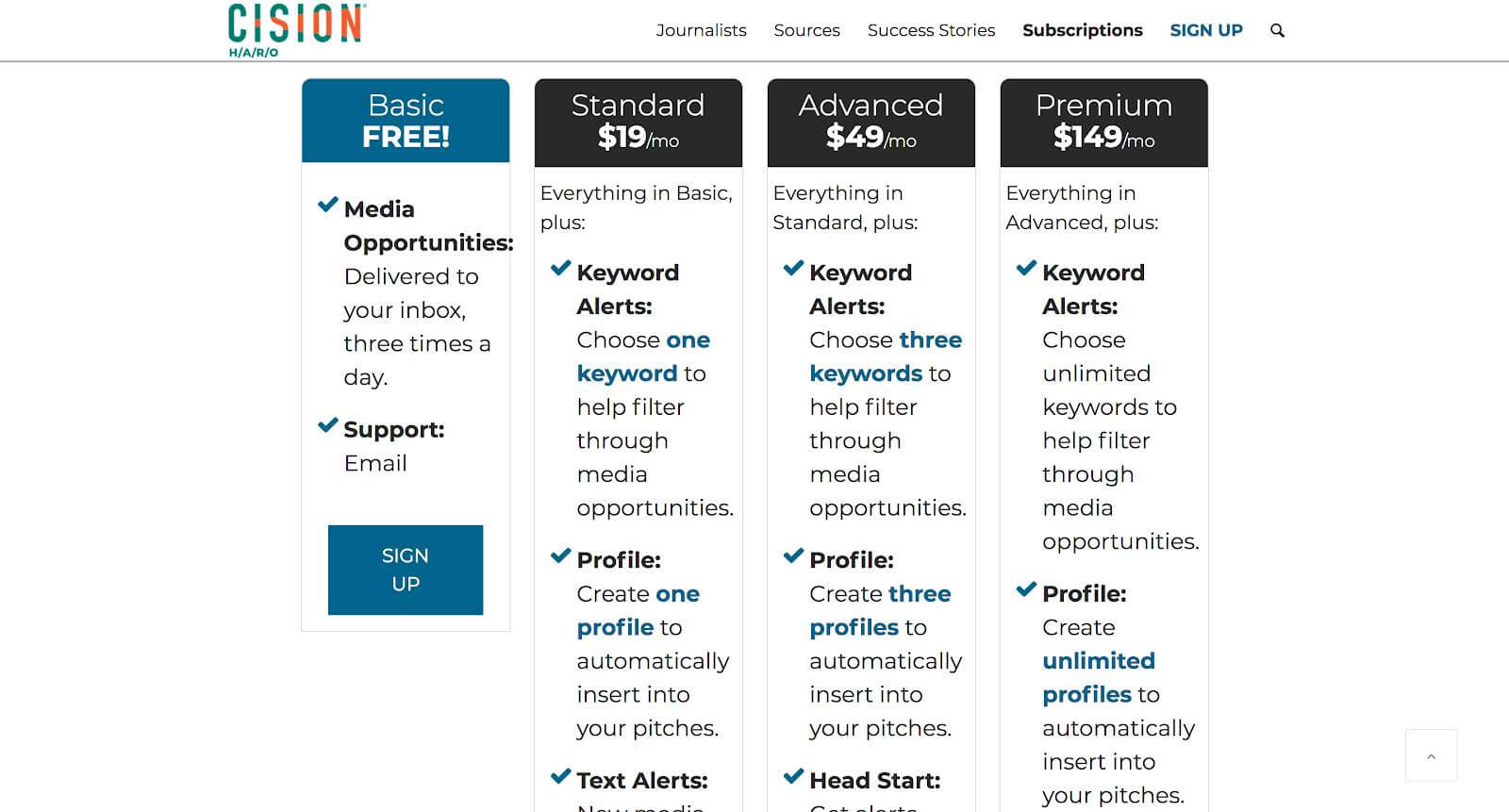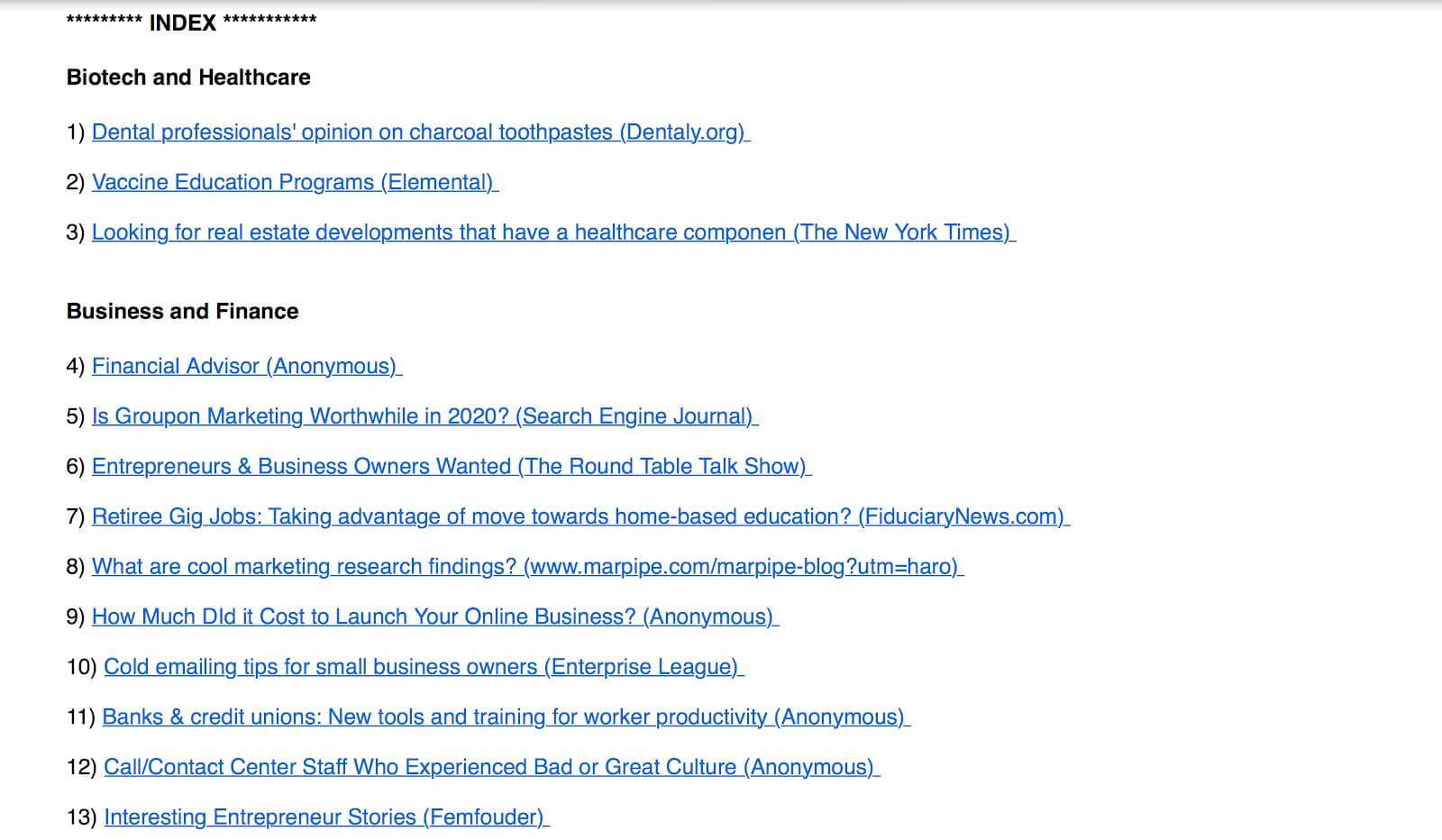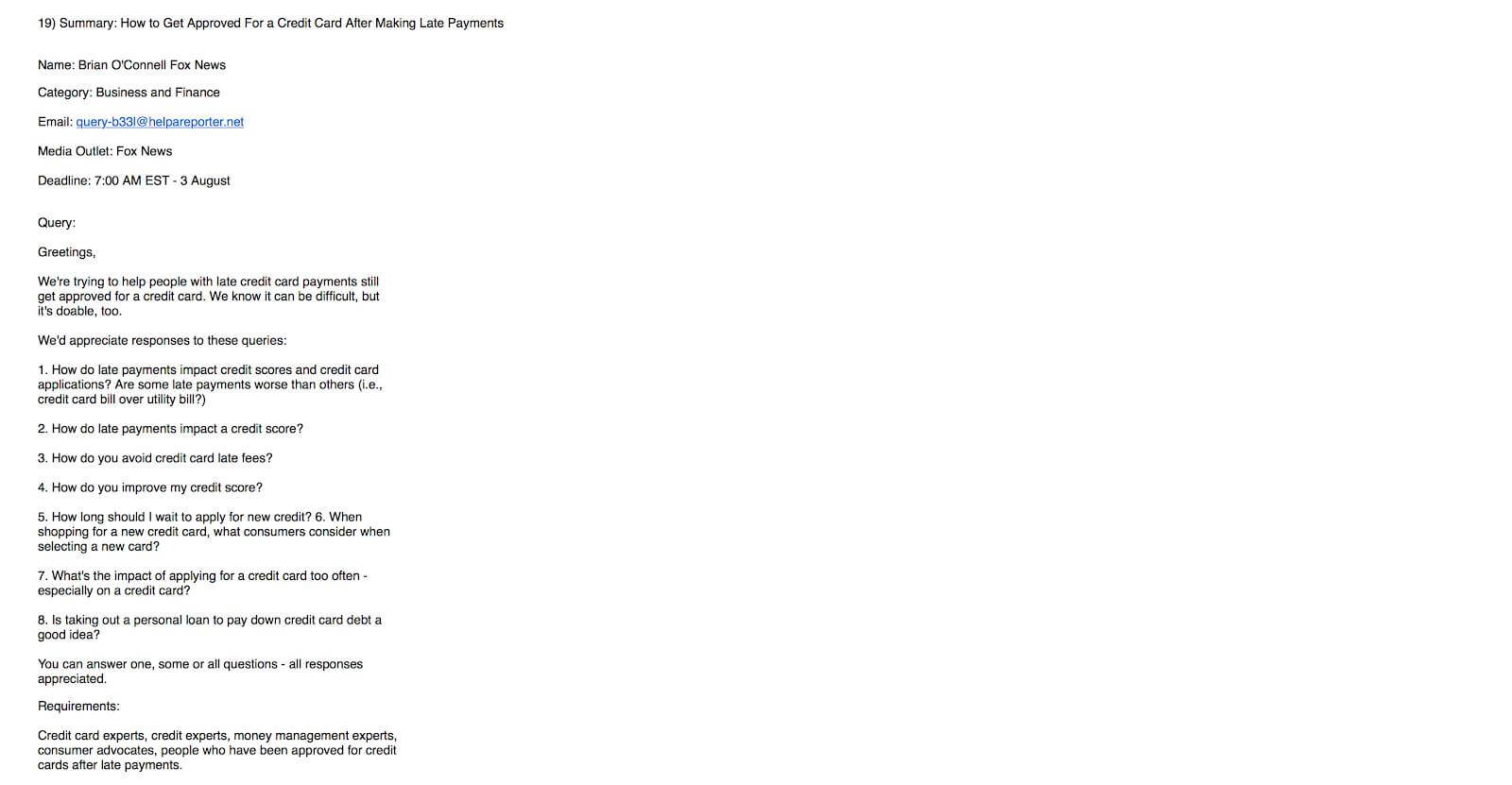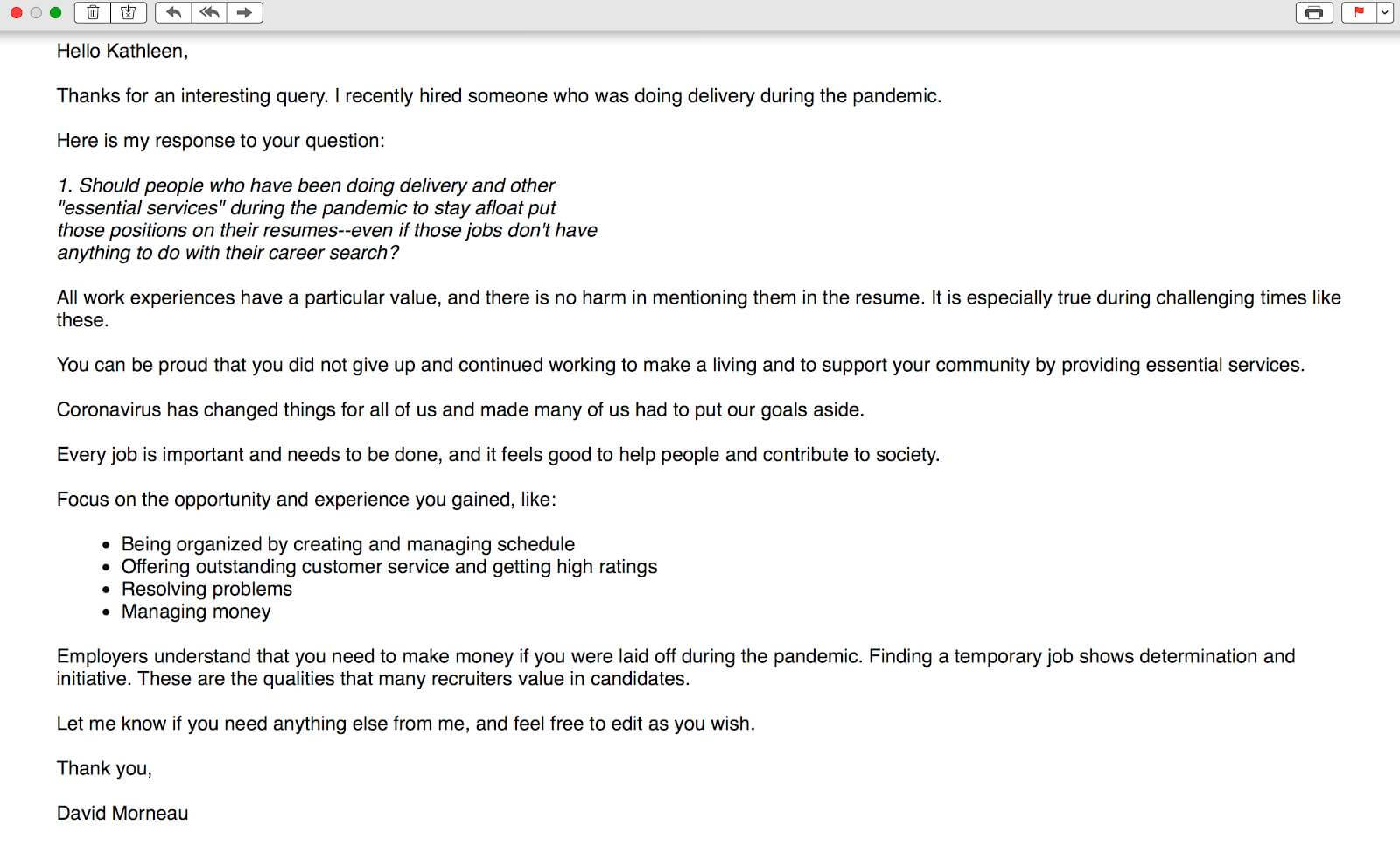Has it happened to you, too?
You tried many link building strategies and found them either too expensive or ineffective. Building quality backlinks is a complex task when no one knows who you are. Many marketers believe that to build the number of backlinks that can boost website traffic requires a celebrity status. I thought so too until I stumbled upon HARO.
What is HARO?
HARO stands for Help a Reporter Out. It is a source that traditional media and bloggers use to find experts for their stories. Want to be featured on Forbes or Reader’s Digest? HARO, when used right, has the ultimate power to make you famous.
Keep reading, and I’ll show four key principles to build 10+ links every month from top authority websites that will make things easier for you.
Here are a few examples of links we have built:
https://clutch.co/hr/resources/employee-health-affected-by-covid-19
https://www.femfounder.co/femfounderstories/tag/instagram+entrepreneur
https://smallpdf.com/blog/how-to-stay-awake-at-work
How does HARO work?
A journalist or a blogger submits a query. A journalist must meet a few requirements to be accepted by the HARO editing team. One of them is to give proper credit to the source once they publish the content. It is an important one if you are after backlinks that drive that can drive traffic to your website! Once the journalist submits a query, HARO sends it to over 800, 000 sources registered on the platform. Keep in mind that only around 300, 000 journalists send queries via HARO, so the competition is high!
Continue reading to find out how to beat the game and get your pitch noticed by overwhelmed journalists.
Before we get started, go to https://app.helpareporter.com/ to register. HARO offers four subscription options. Start with the Basic one. I have the Basic package so far and find it enough.

Fill-up the basic information about you and your company and indicate what topic areas you are an expert in. Once you sign up, you will start receiving emails with queries three times a day in your chosen categories. Emails arrive at approximately 5:45 am, 12:45 pm, and 5:45 pm (EST) and look like this:

Now open your favorite calendar app and set the alarm. I will explain later why timing matters.
In the beginning, it will take you 30-40 minutes to answer one query. I strongly suggest blocking at least an hour each day to write pitches. Some queries are quite complex and require a lot of research for your quote to be noticed.
Four Key Principles to Succeed on HARO
Let me first clarify that if you are after a quick fix, HARO is not for you.You should not expect an instant boost in traffic.. If your goal is to see immediate results, you are better off investing your time and resources elsewhere (manual link building, Adwords or Facebook ads).
Moreover, if you are in a specific niche, you will have to select relevant queries and wait for them to crop up. Think of HARO as a part of your content creation and media outreach strategy, particularly for building quality backlinks. It should not be the only tool to build your online presence.
There are four fundamental principles that I learned after having spent several months pitching journalists on HARO.
Principle 1: Your Credibility as a Source is Key to Success on HARO
Your credentials and online presence are crucial. They will sell you as an expert. Before starting to respond to journalists, make an audit of your website, LinkedIn profile, Twitter (if you have it), and check out your online brand mentions.
Your website should be well-designed, filled with relevant content, and look professional. Journalists often check the sources’ sites before deciding to link back. Spammy, poorly designed websites with little or no valuable content, are less likely to receive a backlink. Reputed media outlets prefer not to quote a source with questionable credentials and a lack of domain expertise.
Write a short bio (50-70 words max) and mention your key credentials. A three-paragraph bio is a little overkill, so keep it concise and to the point.
Outline what makes you stand out among other sources and how your experience is relevant to the query.
Here is my bio: “David is a serial entrepreneur and co-founder of inbeat.co, a TikTok and Instagram influencer discovery platform used by top e-commerce brands and agencies.”
My bio highlights my expertise as an entrepreneur and a marketing expert. Hence, when I answer queries related to running a business, motivating employees, marketing, or social media, my bio proves to the journalist that I am a specialist who can offer a valuable insight into the topic. My credentials scored me mentions on Clutch, Upcity, and other reputable websites.
Besides a concise bio, show a little personality in your response. Add a sentence or two about your unique backstory or hands-on experience. Personalization will help you stand out and will add to your credibility and authenticity.
Principle 2: Timing
Most journalists have hectic editorial schedules and tight deadlines. They need expert quotes as soon as possible to shape their article. Due to the HARO approval process that can cause delays, reporters are more likely to select the first responses they receive.
Even if you send your pitch before the deadline outlined in the query, reporters may have already got what they needed and moved onto the next article.
To increase your response speed and make your pitch land among the first in the journalist’s inbox, set a calendar notification for the timings of queries. Set aside 30-40 minutes per query. Leave everything you are doing, so you can focus entirely on crafting your pitches. As a rule of thumb, respond to queries within one-two hours of receiving them.
If you have a tight schedule and can’t set aside time around the queries send times, then HARO may not be worth investing in.
Do not sacrifice quality and hurry to send your pitch without investing time to research the topic and putting together a well-thought response. Sending an ill-conceived pitch in an effort to be quick is less likely to produce a result.
Principle 3: Actionable and Relevant Pitch
HARO has the following categories of queries: Education, Entertainment and Media, High Tech, Lifestyle and Fitness, Public Policy and Government, and Travel. Select only those that you can accurately respond to with a piece of relevant information.
Go through ALL the queries. It happens that a business query ends up in the “High-tech” category. As a result, some responders will miss it, giving you the upper hand.
Once you click on a link in the HARO email, you will see the query more in-depth, including requirements and what kind of info the journalist needs. For example, that’s how the Fox News link looks like when you click on it:

Your pitch has to be relevant, on-point, unobtrusive, and truly helpful in speaking to a reporter’s goals.
Here is what I learned after having written hundreds of pitches:
- Briefly outline your credentials and why you are qualified to respond to the query. Give a reporter some idea of your experience and background.
- Keep your pitch to one to three paragraphs unless the journalist mentions the minimum word count. Avoid writing an entire blog post. Journalists do not have time to sift through lengthy content.
There are exceptions to this rule. Some queries ask for an in-depth analysis, so you may need to write a longer pitch. Journalists will select the right quotes from every source and most likely will not use your entire text. Don’t get discouraged.
Once I submitted an 800-word pitch, but they quoted only one sentence. You never know which part of your content reporters will select as it depends on other submissions they receive.
- Make your response personalized, unique, and interesting. If the reporter asks for “your favorite self-help book, ” don’t respond by writing “The 7 Habits of Highly Effective People”, that is nearly everyone’s favorite! Pick a book that is unique, lesser-known, or choose a memoir that inspires you. You have more chances to get noticed if your pitch is different from everyone else’s. Use a reporter’s name in your response unless you are pitching an anonymous query.
- Read the requirements and follow them precisely. Usually, reporters provide explicit instructions for sources. For example, in this query requirements are very specific:

They tell you not only what to do but what not to do. Failing to follow requirements will cause a reporter to disregard your pitch.
- Answer questions in an honest way. Use your experience and insider knowledge to offer a unique and useful response. There is nothing more powerful to make your pitch stand out than first-hand experience.
For example, when I answered the query about including interim positions in a resume, I spoke from my first-hand experience hiring someone in a delivery position during the pandemic.. Here is the original pitch:

If a query asks about resolving clients’ complaints, avoid offering general insights. Instead, offer a real-life example of a time you mitigated the situation. The more specific and actionable your tips are, the better.
- Break up the text. Reporters will likely chop it up and use only a few quotes. Big chunks of text can be hard for a reporter to process and quote. Each paragraph should focus only on one idea and be 100-150 words long. Paragraphs need to be to-the-point and quotable.
- Your quotes have to be ready-for-publication. Proofread your pitch so that the reporter can use it with the least editing. Use tools like Grammarly, ProWritingAid, Hemingwayeditor to check grammar, sentence length, and readability. Remember to use a plagiarism checker to make sure your content is unique.
Pitches that are well-written and include trustworthy information can be simply copy-pasted straight into the reporter’s article. You will save a reporter a lot of time and energy.
- Include a link where a journalist could download your 200×200 office headshot. Attachments don’t go through the HARO system.
Principle 4: Follow Up and Promote the Article When It Goes Live.
- Once your quote is published, send a thank you note to the reporter for using your pitch. In your email, you can add something like: “Feel free to contact me if you need my expert opinion on X topic.”
- Promote the article on your social channels and your website. For example, you can link back to the article in one of your blog posts (if it fits the context). Let journalists know about the link and tag them when sharing the article on social media.
The benefits of HARO are obvious. Media mentions and links are great for social proof. They will help you get publicity, increase website traffic, build your credibility as an expert, and drive brand awareness.
Final Words on How to Succeed on HARO
One of the critical factors that can make it or break it on HARO is consistency. Write targeted pitches and respond to at least one query daily. Be patient because after sending several pitches, you may not hear back from reporters for weeks. Editorial schedules are different for each journalist, and sometimes your quote gets published one month or more after you responded to the query.
I also noticed that you don’t always get a heads up from a reporter once the article went live. Use tools like Google Alerts, Ahrefs, BuzzSumo, and SEMrush to track backlinks and online mentions.
To maximize the benefits of HARO, you need to master your communication skills and invest time in writing actionable and unique content. Showcase your credentials in the best way possible, stay on topic, and answer queries relevant to your field of expertise.
When done right, HARO can become a full-time job. So if you are a small business owner, it’s sometimes easier to have someone handle HARO on your behalf as your PR agency.

